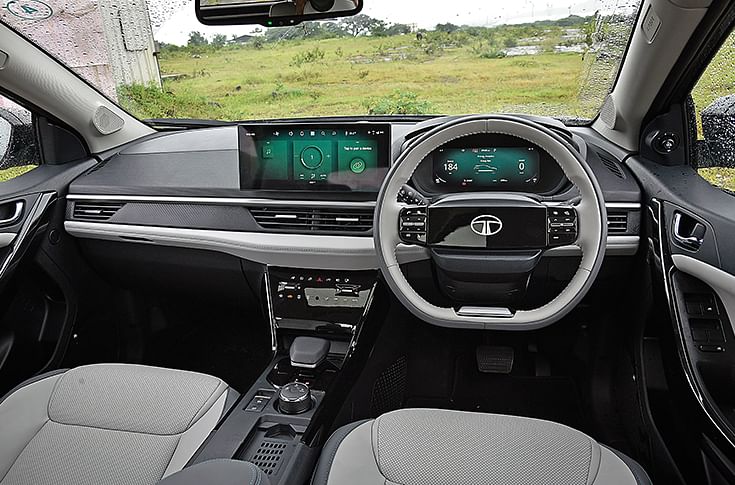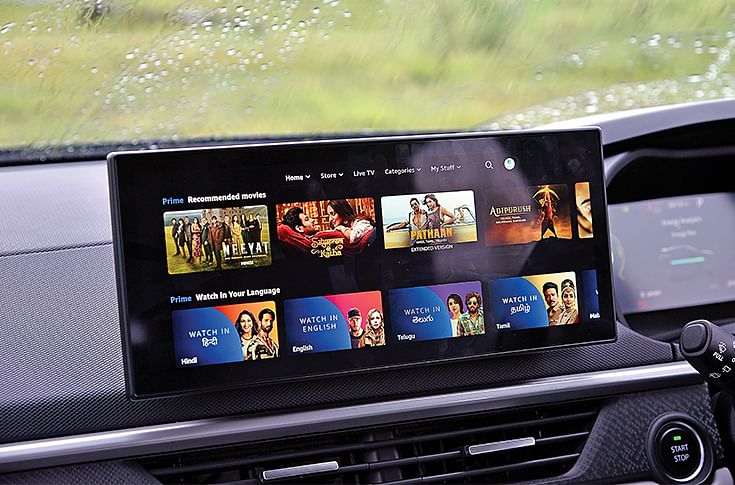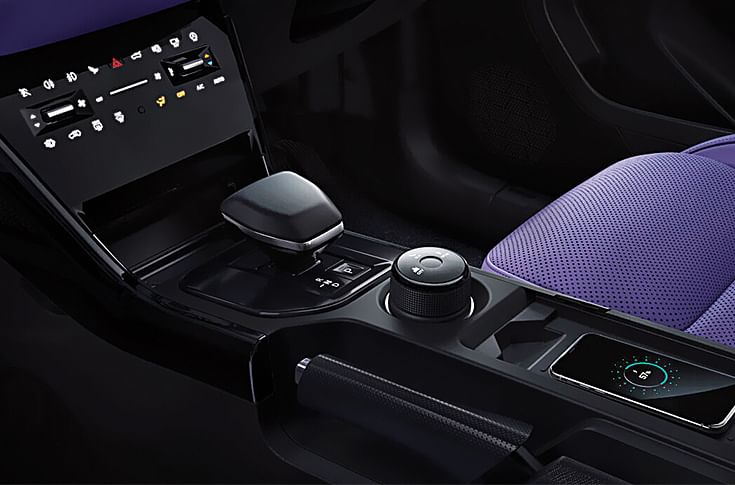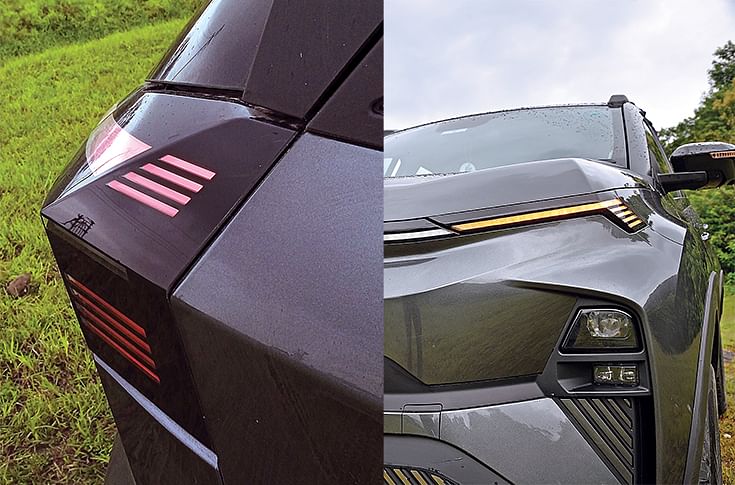‘Innovation is the backbone of a good product design’: Martin Uhlarik
The 2023 version of the Tata Nexon.ev is much more than just a cosmetic upgrade. The Global Design Head of Tata Motors, Martin Uhlarik explains the rationale and thinking that went behind recreating one of the brand’s most successful products to Autocar Professional.
- Click here to subscribe to Autocar Professional Magazine
- Click here to buy Autocar Professional October 15 issue on Amazon
Martin Uhlarik was appointed as the new Global Design Head of Tata Motors in 2021. Since joining the company in 2016 as Head of Design, UK, he has led the development of the Impact 3.0 generation of vehicles. Impact 3.0 is Tata Motors’ latest design philosophy that has been successfully applied to models like the Tiago, Tigor, Nexon, Altroz, Hexa and Harrier. Autocar Professional met him at the launch of the refreshed for 2023 Nexon.ev media preview event to understand how the project was shaped and its various mission objectives.
What was the starting point for the refreshed Nexon electric vehicle project?
If you think about the Nexon EV in its whole sort of lifespan, fundamentally it was introduced in 2017 and immediately as a white space product, it created a segment and a very comprehensive and successful product.
When we started this project for its mid-cycle enhancement (MCE), we looked at the customers who were buying the product and we analysed feedback. We analysed the things that they liked about it. But we also looked at where the trend lines are going. We talked about digitisation, which is a kind of very broad word, but obviously this is an EV platform, but with the EV vehicle, as well as the others, products are now, the vehicles are now being seen as consumer products.
And people are looking at the vehicle in that context. Whether it's how you interface with it, in terms of engaging, switching, implementing functions and how it works in an ecosystem.
Are you saying that there’s a change in perception about buying an electric vehicle?
Cars are not isolated products anymore. They are a kind of seamless part of your life. It is also connected with your daily life. We all have a smartphone, we are all online, we all communicate. So it's a kind of a 24/7 ecosystem with seamless connectivity. And then of course quality, if you notice, how quickly other industries improve their technology and quality. For instance, the transition from analogue to digital. It is the right word nowadays.
Then you have, of course, demographically young people have a very different perception than as you have now. And you don't want your product to be associated as being sort of a dinosaur. So Nexon.ev is a kind of perfect avatar to communicate these things.
You know, we did the mid cycle enhancements and from a design point of view we studied a lot of things from the product, marketing, customers’ point of view.
With the inputs that you have just mentioned, how did design involve itself in the product, considering that the Nexon SUV already exists?
From a design point of view, obviously, there's a collective exercise, design, engineering, architecting, customer feedback first, understanding the strengths of your brand, your product.
The Nexon EV is a very successful product in the third platform since the core of our portfolio. And so the idea is don't change the recipe, but maybe add a bit more spice and variation. And don't disconnect people who appreciate it. And then make the quality to match.
Can you highlight some of the design ethos or detailing elements in the 2023 Nexon.ev?
Everything is much more sharp or crisper and communicates high quality. As much high tech as you can see in this segment without disrupting the price position. We are offering comprehensive features in the exterior, interior, technology in the lights, the UX, UI, the colour palette, the materials, you know, what you've seen. And we offer a wide menu when it comes to features. I think that's the strength of the Nexon, as it has a real bandwidth now.
We understand that the price point will be very attractive, and the feature pack has been expanded quite a lot. Were there compromises?
We designed a target and right at the beginning we're given bandwidth. And it goes both ways. There is no compromise in the sense that we know where we want the position of the vehicle.
But we also know there's a maximum, there's a minimum. We have an entry-level model and we have a fully loaded Nexon.ev version. There’s a lot of high technology that has gone into the vehicle.


 There has been a conscientious effort in differentiating the feature pack in the ICE and EV variants of the refreshed Nexon models besides ensuring a premium feel in comfort features and handling.
There has been a conscientious effort in differentiating the feature pack in the ICE and EV variants of the refreshed Nexon models besides ensuring a premium feel in comfort features and handling.
Design vs engineering interaction is usually a delicate balance in the industry. How does it work here?
As responsible designers, you have to be creative. For instance, some people have asked me, you know, you don't have any chrome on the car. We took that off the table, but I didn't take the money off the table. I just put it somewhere else.
Take a look at the bonnet. We removed the chrome strip and made an innovative light guide. The light guide, for me, it's far more it's a digital product. And then, of course, one of our designers, very creative, said, why don't we actually have a pulse? When you switch the car on, there's a start-up sequence on the LED light bar. For me, the light guide is the new chrome.
At the same time, we use technology as not only an avatar to improve the perception of this car with the LED lights in the front and the rear, but at the same time this new technology, these LED lights by being smaller from a packaging point of view, they obviously offered more space to play and improve aerodynamic quality and other areas of the vehicle.
On other design related changes, we've changed the panels, the rear tailgate, redesigned the rear spoiler with concealed wiper. In the cabin, we've changed many parts of the instrument panel.
How did that idea come in — the LED strip under the bonnet, which also doubles as your charging indicator?
Well, we wanted to create a difference between an ICE and EV versions that was essentially not just powertrain, a colour signature, which was the accent. We said we need to go somewhere beyond that, because first, the accent doesn't marry colour-wise with, say, a red car.
But then one of the designers said, why don't we make it a little bit entertaining? You've got to have a bit of fun. And then, you know, have that pulse, so maybe if I'm having a coffee, or I'm looking out of my office, I can see, kind of, roughly, it's 50 percent or something like that. Most people look at their mobile phone time-to-time to see the battery status, so why not use that logic here?
Taking on that with EVs technology is changing very fast. So how does that impact you as a designer?
Oh, you know, a lot and in a good way. Design has always historically been influenced by new technology. So, innovation is the backbone of good design. Of course, I must make it beautiful.
You know, it must be attractive and appealing and age with grace. But technology is the real driver. So, you know, if we're talking about just this car as an example, the lights, the LED lights.
 LED lighting modules have been custom built and serve more than one purpose besides saving on energy consumption.
LED lighting modules have been custom built and serve more than one purpose besides saving on energy consumption.
The idea is 30 percent energy saving just by transferring to LEDs liberated us. The old lamp was like a box. Now it is the size of my phone, maybe not that small, but almost. Also, we can do aerodynamics. We can do an air curtain. We have much more space to play with in terms of sculpture, proportions, the rear X-Factor is not just a light anymore.
Tell us more about the grille design concept in the EV which is now a redundant feature compared to ICE.
It's a physical legacy of what a grill used to be. And it was a radiator, which was then chrome, the position is premium and became a visual signature to say it's a premium thing. It kind of went past that it's not a radiator in the plastic sense anymore, and it's quite heroic.
And, chrome, to be honest, it adds complexity, and then I'm reducing paint on the finishers, so everything is molded, so it's an injection in the plastic.
What were the main considerations for the interior?
From an interior point of view, the technology is really focused on the two screens, TFT in the middle, which we're offering in a 12-inch package on the instrument panel and of course the driver at the same time. All the switches are now capacitive-type and it's all engaged through a new steering wheel design which we previewed on the Curvv and the Sierra at Auto Expo. And it's seen as the gateway, the electronic device for the driver to engage the UX and the UI.
How would you describe the experience when you worked the Nexon EV that's now become Nexon.ev?
When we introduced it, it was a white space product. We have obviously previewed it with the original concept and at the same time, right from the beginning of production, it has been seen as a leader in this four-meter SUV space. And of course, it's aspirational and a fashionable product. Your life doesn't stop when you get into a Nexon.ev. It is like a seamless, harmonious Segway and your life doesn't stop when you're driving or you're a passenger. So, as I mentioned, the core character of a Nexon has a unique sort of place in the Indian market. It is an innovator in the segment. At the same time, it was a tech forward product. The introduction of the EV powertrain and platform has been showing that the Nexon.ev is a leader in the marketplace.
For you, what are the challenges of keeping pace with the dynamic changes in the marketplace?
It's not just like the orthodox four plus three life cycle. You launch a car, set in your life cycle four years, face lift in three years. I think, I mean, we have this term forever. We're constantly polishing. It's almost like a diamond. You're constantly polishing it. And you constantly have to get that customer feedback, customer input. Like an athlete (we are) constantly training. It never stops.
This interview was first published in Autocar Professional's October 15, 2023 issue.
RELATED ARTICLES
'No Question of Us Being Late' - Suzuki India on e-2Wheeler Market
Suzuki Motorcycle India believes its EV entry is timely as the market is now mature enough to grow off genuine demand ra...
'India Can Become a Major Pillar for Us' - Marquardt Group
Björn Twiehaus, CEO of Marquardt Group, and Vishal Narvekar, the company's India GM, share their outlook on the Indian m...
Luxury Car Market to Slow in 2025: Mercedes-Benz Sees Flattish Numbers
In Jan to March of 2025, the market may witness its slowest growth since COVID-19, and if the weakness continues, the se...





 20 Oct 2023
20 Oct 2023
 20039 Views
20039 Views





 Angitha Suresh
Angitha Suresh


 Darshan Nakhwa
Darshan Nakhwa

 Prerna Lidhoo
Prerna Lidhoo

